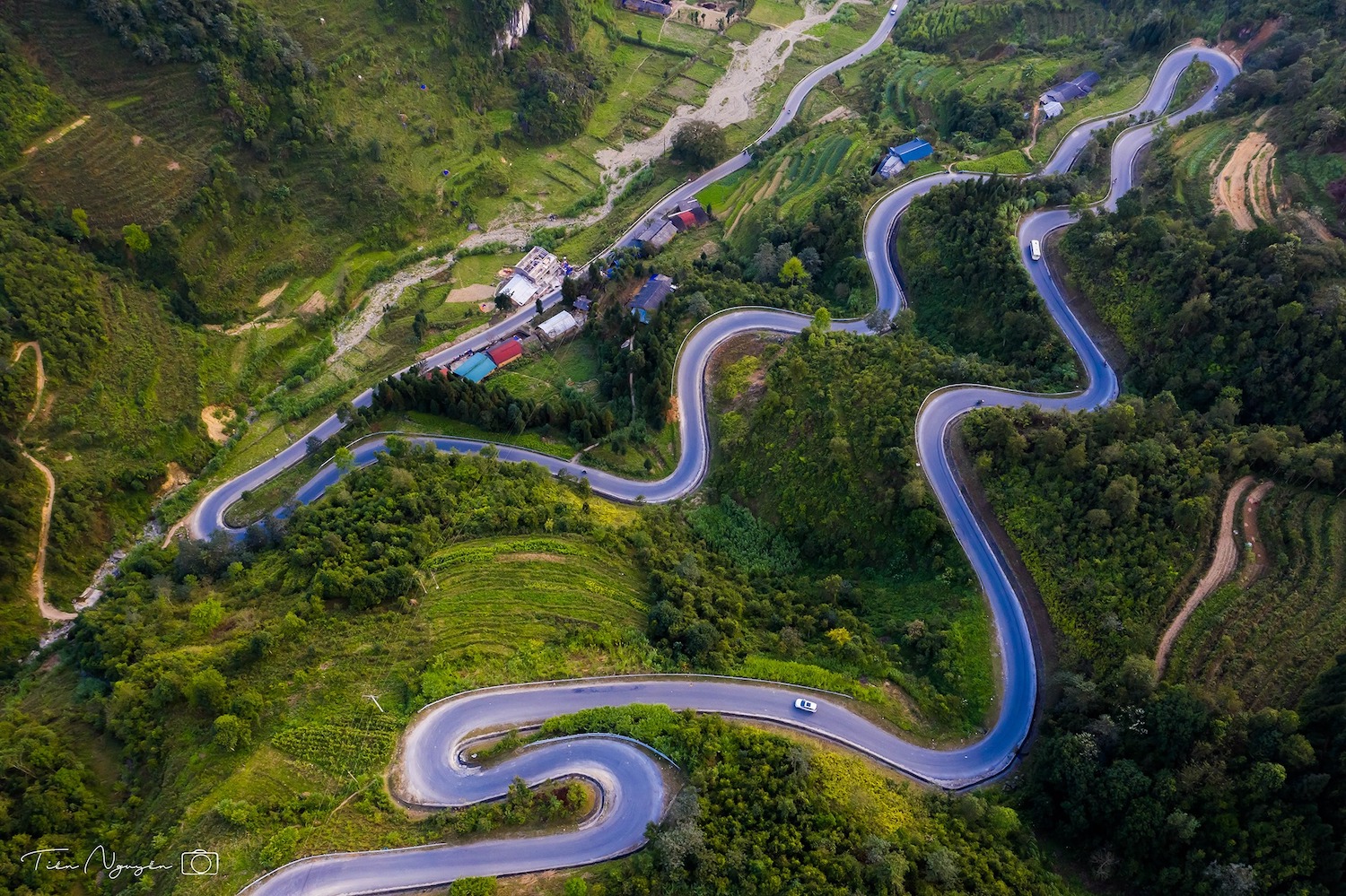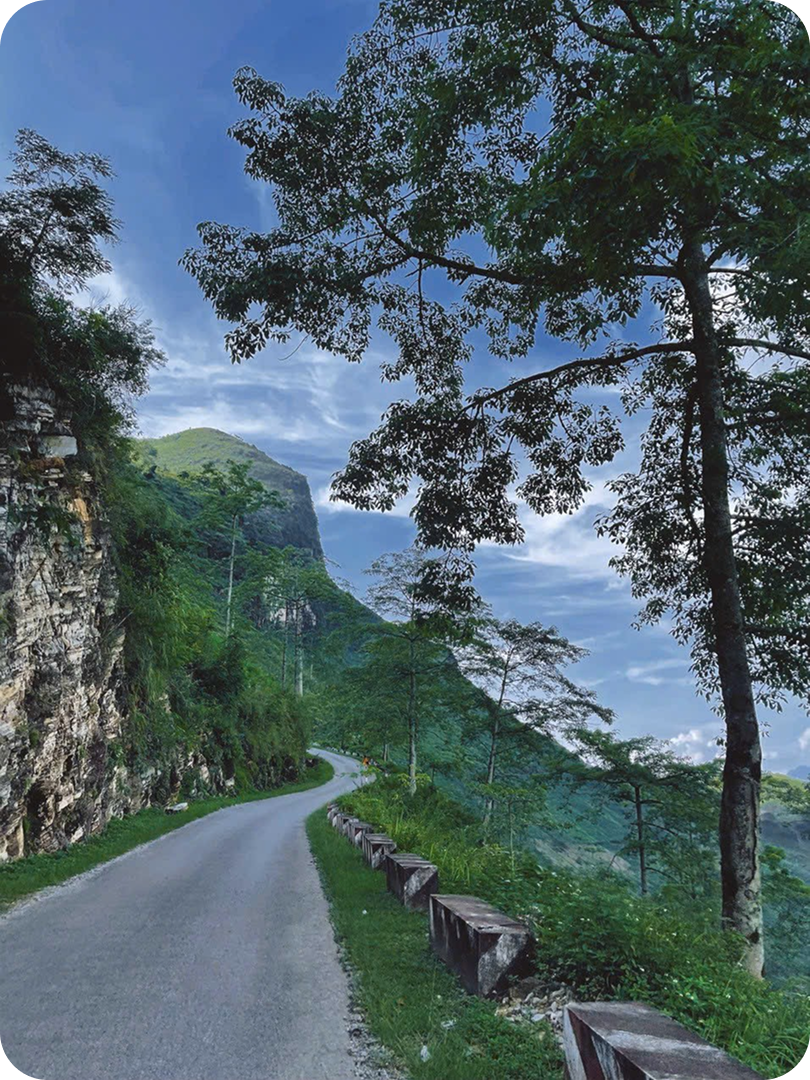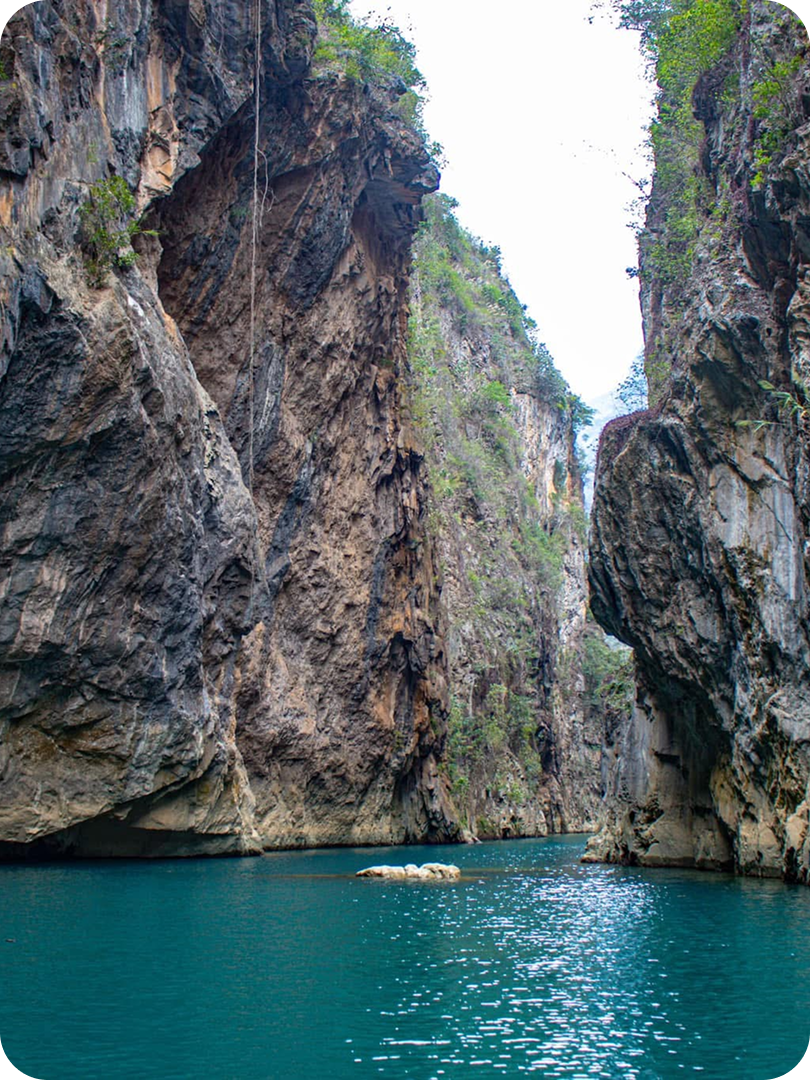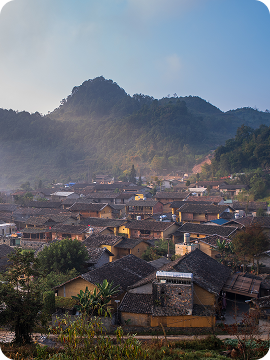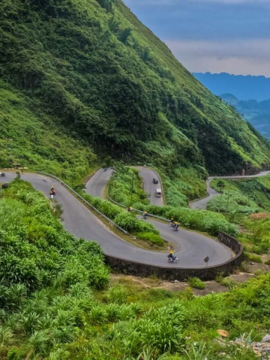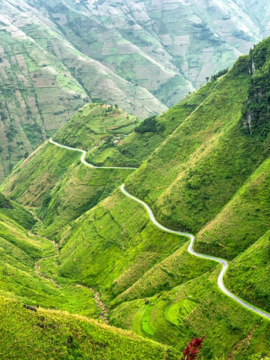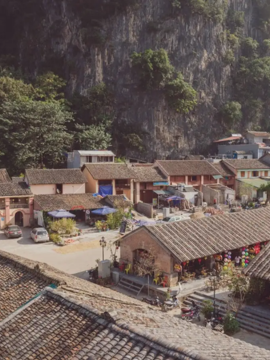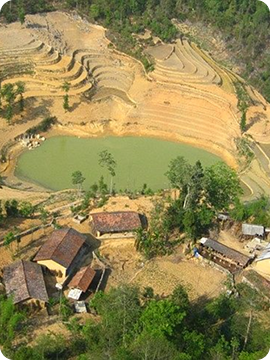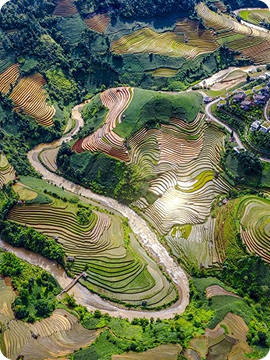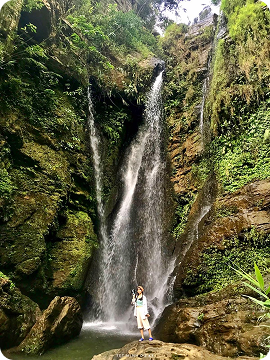Ma Pi Leng Pass is one of the most iconic mountain passes in Ha Giang, Northern Vietnam, famed for its sharp curves, steep cliffs and stunning views of the Nho Que River. In this travel guide, Phieu Travel covers its history, the meaning behind its name, how to get there, best things to do, and ideal time to visit. Discover top tips to make your trip to Ma Pi Leng unforgettable – let’s explore this breathtaking destination!
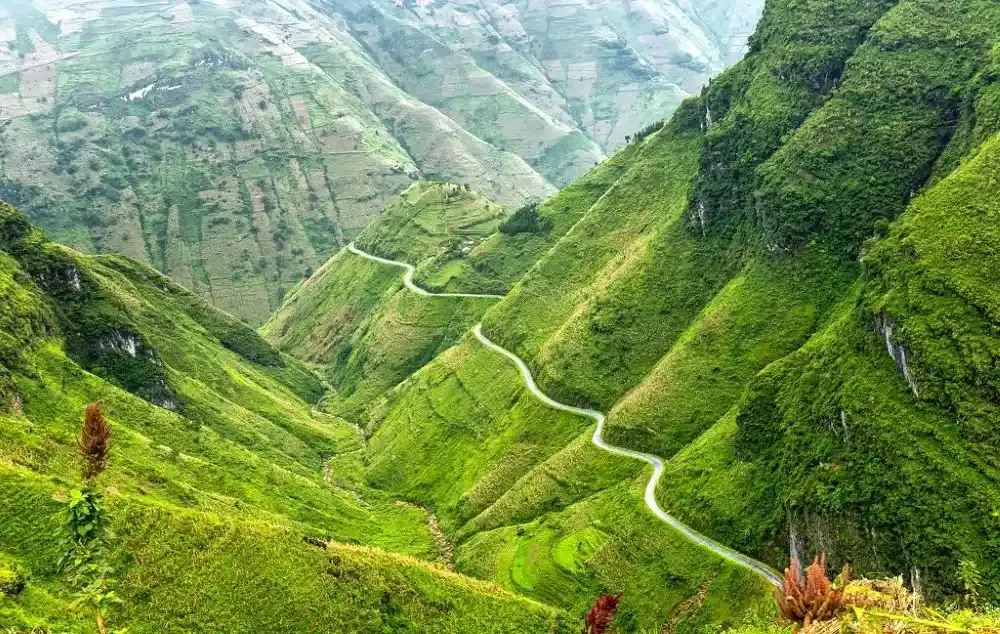
1. Overview of Ma Pi Leng Pass
Ma Pi Leng Pass is not only one of Ha Giang’s most challenging roads but also a landmark rich in history and culture. Nestled in Northern Vietnam’s rocky plateau, it’s often hailed as a “majestic wonder” of the region. In the sections below, discover the pass’s historical background and the unique meaning behind its name.
1.1 History of the formation of Ma Pi Leng Pass
Ma Pi Leng lies on National Highway 4C, part of the legendary Hanh Phuc (Happiness) Road linking Ha Giang City to Dong Van and Meo Vac. Before 1960, this was a towering limestone barrier. Over 80,000 Hmong residents lived beyond it, crossing dangerous cliffs by ropes and stakes.
On September 10, 1959, construction of the Hanh Phuc Road officially began. More than 2,300 volunteers from 16 ethnic groups carved nearly 2.9 million cubic meters of stone by hand. The 20 km Ma Pi Leng segment alone took 11 months to complete, with workers suspended from the cliffs. By June 15, 1965, the road opened, transforming access to trade, education, and healthcare for highland communities.
1.2 Meaning of the name “Ma Pi Leng”
In the H’mong language, “Ma” means horse and “Pi Leng” refers to a nose bridge – together describing a narrow ridge as steep as a horse’s nose. Locals say the terrain was once so harsh that even horses struggled to breathe while climbing it.
Some believe the name means “cat’s nose,” but this version is unfounded. The H’mong don’t raise cats – horses are central to their life. Moreover, the pass was only constructed in 1960, making it unlikely for symbolic folk names like that to predate the road itself.
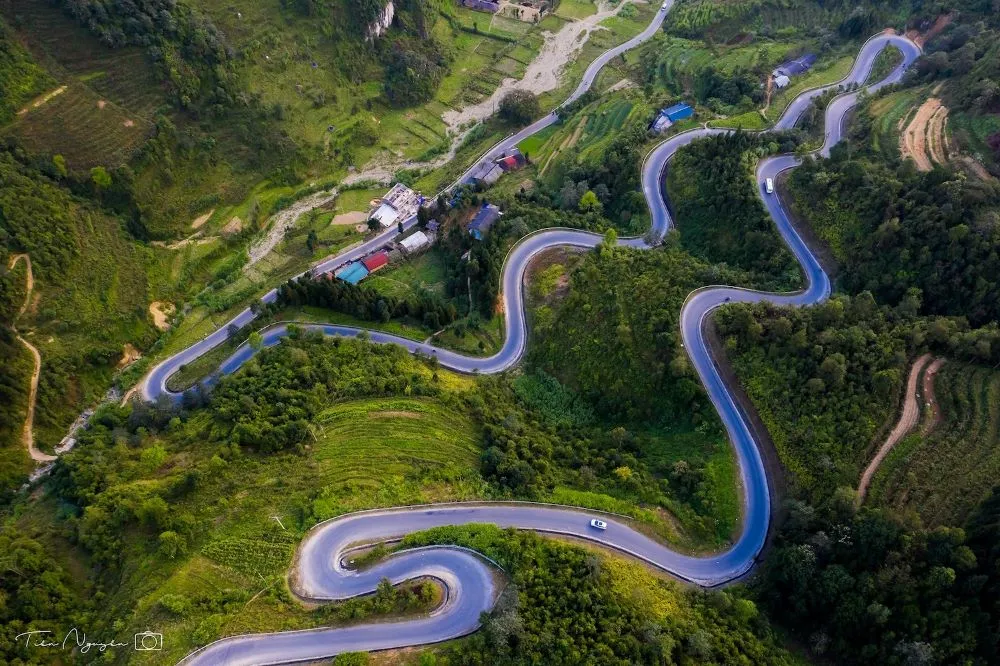
The Ultimate Ha Giang Loop Guide (2025): Itinerary, Map & Tips
2. Location and how to get to Ma Pi Leng Pass
Ma Pi Leng Pass is located in Ha Giang, between Dong Van and Meo Vac. This section offers step-by-step directions to Ma Pi Leng Pass from key cities such as Hanoi, Ho Chi Minh City and major tourist destinations across Central Vietnam.
2.1 Route from Hanoi
From Hanoi, you can reach Ma Pi Leng Pass by motorbike, covering around 300 km (186 miles) through Viet Tri and Tuyen Quang in 6–8 hours. This option suits adventurous travelers, with scenic stops like Tam Dao along the way.
For a more comfortable journey, sleeper buses depart nightly from My Dinh Station and arrive in Ha Giang by early morning. Upon arrival, travelers can rent a motorbike or take a local motorbike taxi (xe om) to continue toward the pass.
2.2 Route from Ho Chi Minh City
The fastest way is to fly to Hanoi (about 2 hours), then continue to Ha Giang by bus or bike. Alternatively, direct sleeper buses or trains from Ho Chi Minh City are available but can take over 30 hours – ideal for slow travelers exploring Vietnam’s length.
2.3 Route from Central Vietnam
From Central Vietnam, such as Da Nang, Hue, Quang Ngai,… you can fly to Hanoi, then head to Ha Giang by bus or motorbike. Some travelers also take the train or long-distance buses northward, stopping in Hanoi before continuing their journey. While longer, this overland route allows you to explore Vietnam’s central and northern regions along the way.

3. Must-do activities at Ma Pi Leng Pass
Let’s explore the must-do activities that bring this legendary mountain road to life.
3.1 Enjoy the view from the top of the pass
The top of Ma Pi Leng Pass offers a sweeping view over the Dong Van Karst Plateau and the emerald ribbon of the Nho Que River far below. Whether by motorbike or car, you can stop at various viewpoints to admire the cliffs, clouds and winding roads. Some spots charge small fees, but even roadside stops deliver equally stunning scenes worth every pause.
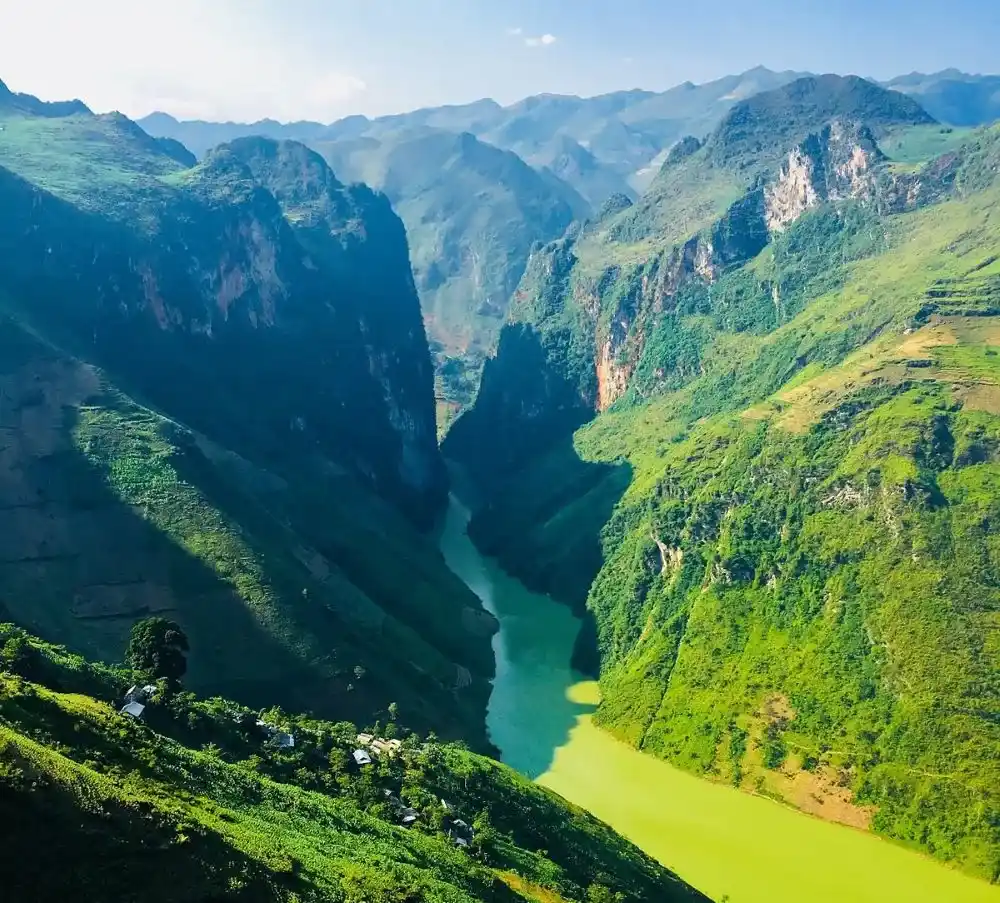
3.2 Experience the skywalk at Ma Pi Leng
The Ma Pi Leng Skywalk begins near the Hanh Phuc Road Museum, winding along a rugged cliff at over 1,500 m (4,921 ft) above sea level. Once open to motorbikes, the path is now reserved for pedestrians due to its narrow width and steep drop-offs – making your walk safer, yet just as exhilarating.
About 1 km in, you’ll reach dramatic rock formations with ledges that feel suspended in the air – ideal for unforgettable photos above the valley.
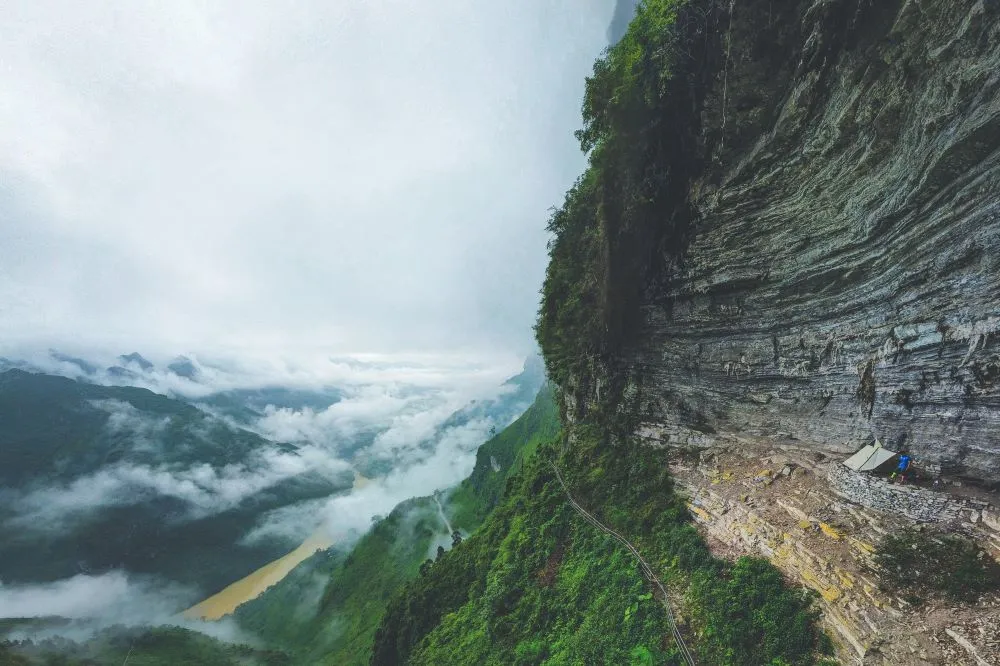
3.3 Take photos at the “Eye of Ma Pi Leng”
If you’re looking for a photo that truly captures the spirit of Ma Pi Leng, head to the “Eye of Ma Pi Leng.” It’s a small cave-like opening carved into the cliff, about 700 meters from the Skywalk path. The spot isn’t large, but it gives a one-of-a-kind view over the valley below. Many travelers pause here to snap quiet, powerful shots with the mountain as their backdrop.
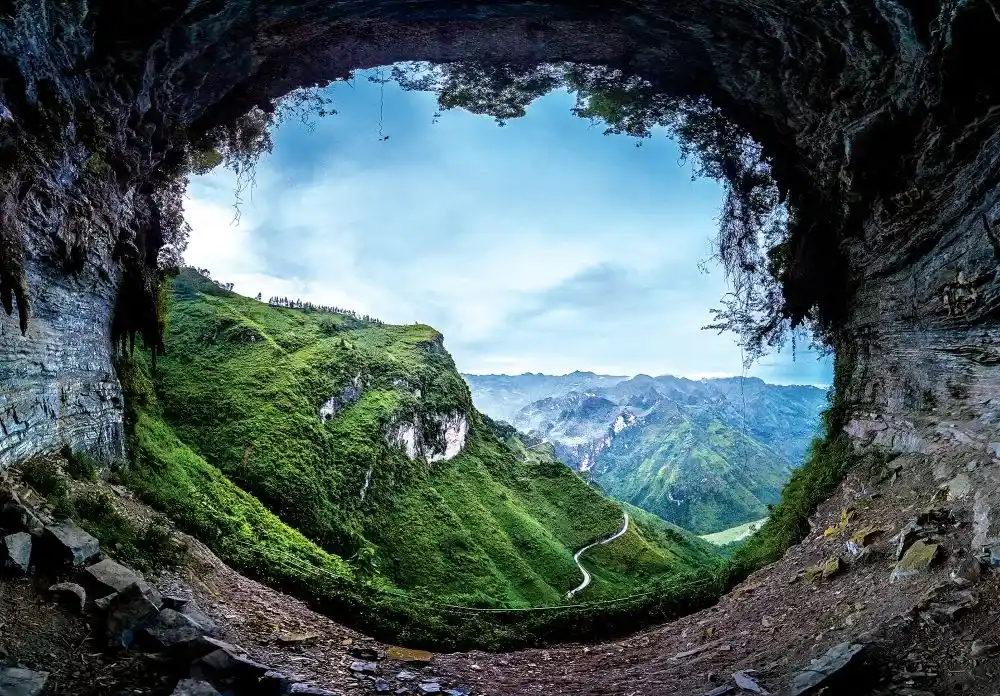
3.4 Go boating on the Nho Que River
To reach the Nho Que River, follow a steep, winding road down from Ma Pi Leng Pass to the boat station near Ta Lang village. From there, you can hop on a wooden boat and glide through the dramatic Tu San Canyon – surrounded by limestone cliffs rising hundreds of meters high. A ride typically costs around 300,000 VND per boat. It’s one of the most serene and unforgettable experiences in Ha Giang.

3.5 Explore nearby attractions around Ma Pi Leng
Beyond Ma Pi Leng, several nearby spots are worth adding to your journey.
- Dong Van Old Quarter: About 20 km away, this historic town features stone houses, narrow lanes, and French colonial architecture. Great for morning walks and local coffee.
- Tham Ma Slope: On the way to Lung Cu, this zigzag pass offers dramatic views and is a common photo stop.
- Meo Vac Town: At the end of the pass, this town is known for its vibrant Sunday market – the largest ethnic gathering in the region.

4. Best time to visit Ma Pi Leng Pass
Ma Pi Leng has something to offer in every season – whether you love flowers, festivals or breathtaking landscapes. Here’s a quick guide to what you’ll find each time of year:
- January – March: Peach and plum blossoms cover the hillsides in soft pink and white – perfect for nature lovers and photographers.
- April: The Khau Vai Love Market takes place once a year, bringing together ethnic communities in a colorful, cultural gathering.
- September: Harvest season transforms rice terraces into golden waves — one of the most stunning views in Ha Giang.
- October – November: Buckwheat flowers bloom across the cliffs, turning the mountains into a sea of pink and lavender.
- December: Mustard flowers brighten the grey landscape, and you might even catch a rare dusting of snow on colder days.
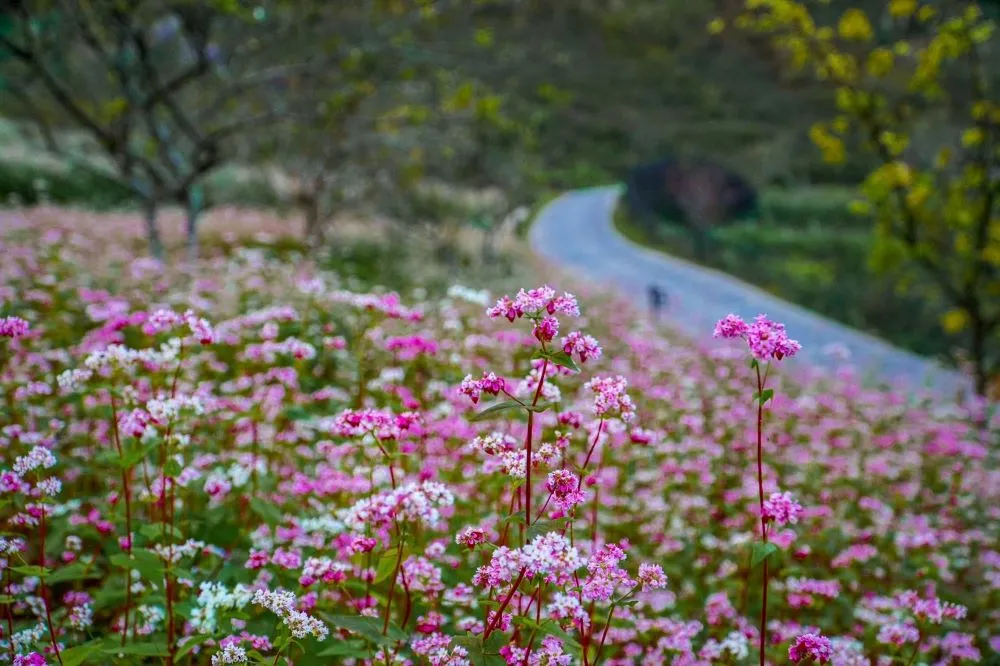
5. Travel tips for Ma Pi Leng Pass
Traveling to Ma Pi Leng requires thoughtful planning, especially if you’re coming from Hanoi or taking the mountain route by motorbike. Here are practical tips to help you prepare:
- Clothing: Always wear long sleeves to stay warm and protect against insects. In winter, temperatures can drop below 10°C (50°F), so bring a thick jacket, gloves, scarf, and thermal socks. However, avoid bulky layers – you’ll need flexibility for steep climbs and walking stretches.
- Food & Water: If you’re riding from Hanoi or exploring the pass by motorbike, pack snacks and at least 1–2 liters of water. Roadside stops are rare, but there are scenic points to rest and refuel along the way.
- First Aid & Health: Bring basic medicine such as fever reducers, motion sickness pills, band-aids, antiseptic,…. Mosquito repellent, wind oil, and itch relief cream are essential in forested or remote areas.
Motorbike Essentials: There are no gas stations or repair shops on the pass. Carry a 1.5L gasoline bottle, a tire patch kit, pump, adhesive, basic tools. Don’t forget your driver’s license, vehicle registration and insurance.
6. Phieu Travel – Conquer Ma Pi Leng Pass with the best experience
Rooted in Ha Giang, Phieu Travel designs meaningful travel experiences that go far beyond sightseeing. Instead of just passing through, you’ll discover the soul of Ma Pi Leng Pass – one of the most iconic highlights of the Ha Giang Loop – guided by locals who live it every day. Our team crafts each journey with cultural depth, environmental care, a focus on your safety and comfort.
Why travel with Phieu?
- Local Expertise: Guided by Ha Giang – born locals who know every turn, trail, and tradition.
- Flexible Itineraries: Choose from 2D1N to 4D3N tours – ride solo, with a guide, or in a group.
- Diverse Tour Options: Motorbike, car, trekking, …- all adapted to your comfort and adventure level.
- Cultural Immersion: Interact with ethnic communities through shared meals, homestays and local experiences.
- Safety First: Well-maintained vehicles, support crew and thoughtful routes for peace of mind.
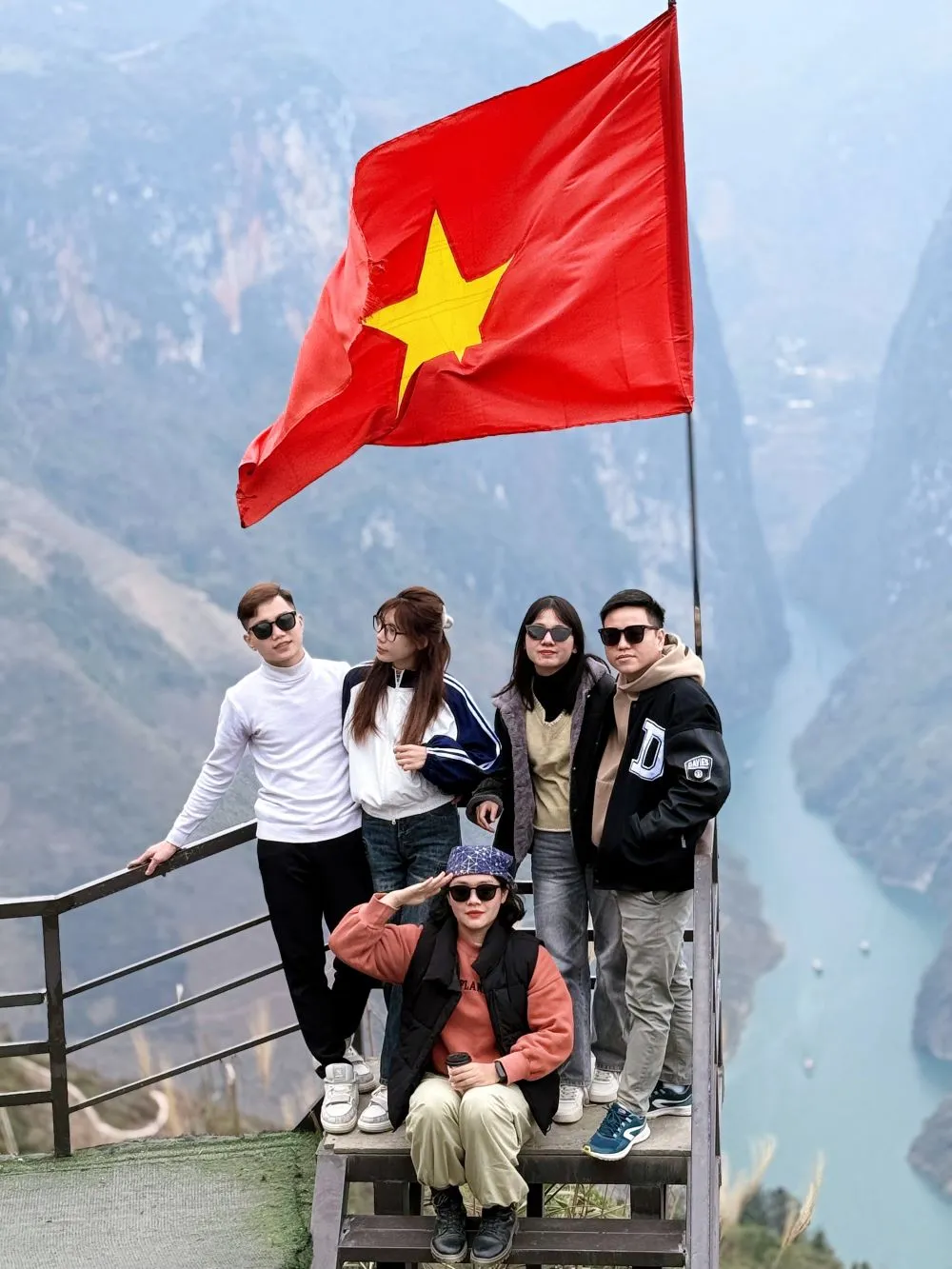
With its dramatic cliffs and breathtaking views, Ma Pi Leng Pass draws thousands of travelers each year. If you’re ready to experience its true beauty while connecting with the people and culture of Ha Giang, let Phieutravel.com be your trusted companion! We’ll help turn your journey into something meaningful and unforgettable.
You Might Also Like:
- 4 Days 3 Nights Ha Giang Loop tour: Slow down, see more, feel more
- Nho Que River – The Emerald Gem of Dong Van Karst Plateau
- Lung Cu Flag Tower – A Sacred Symbol at Vietnam’s Northernmost Point


